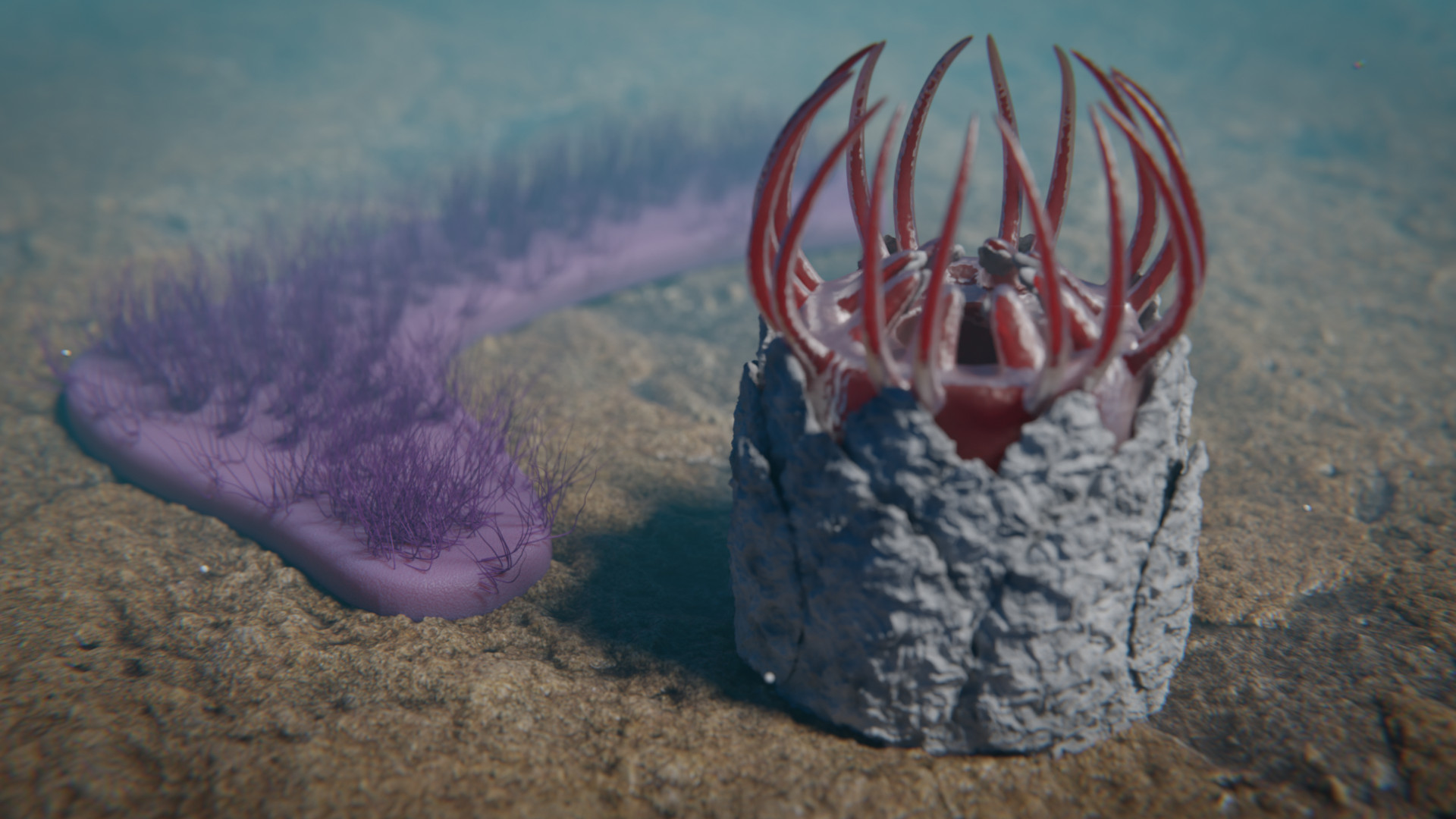Snare Crown
In the wake of the mass extinction reef crowns diversified into new niches, one species becoming quite large relative to other reef crown descendants due to its more predatory diet. The snare crown, as they have been called, are sessile predators that feed on small swimming organisms who stray too close to their grasping tentacles. Pictured here a solitary snare crown has attached to a rock and is waiting for food to swim by. [Creature design by Chared, Doctor Misa, and Saurusblood]
Basic Information
Anatomy
Similar to the ancestral reef crown, the snare crown losses its motile tentacles when it reaches adulthood. They no longer build a tube like structure out of calcium carbonate, now using it as a short rounder shell that attaches to the sea floor or corals. Much of the calcium carbonate has been repurposed to the interior tentacles, converting them into crushing teeth that masticate prey items.
The snare crown still lacks a through gut and will simply regurgitate indigestible matter.
Genetics and Reproduction
Snare Crowns are simple male and female broadcast spawners. These spawnings, like with their ancestors, happen every full moon.
Growth Rate & Stages
Snare crowns begin as a larval form that resembles the ancestral Rose Crown. It will spend its first approximately 90 local days as part of the planktonic soup before eventually settling on the seafloor or on a piece of coral.
Ecology and Habitats
Snare Crowns are sessile carnivores who live in the shallow seas around southern Arctica, Yama, and Kub Shay.
Additional Information
Perception and Sensory Capabilities
The grasping tentacles of the snare crown are very sensitive to touch and have limited chemoreceptors for identifying prey items.
Genetic Ancestor(s)
Scientific Name
Laqueocorona griseo
Origin/Ancestry
Stephanozoa
Lifespan
5 local years
Average Height
8 cm
Geographic Distribution
Remove these ads. Join the Worldbuilders Guild











Comments